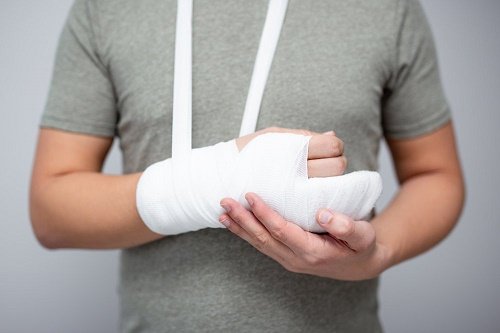Fractures

What is Fractures
A fracture is a broken bone. It requires medical attention. If the broken bone is the result of major trauma or injury.
A bone fracture is a break in the continuity of a bone.
If more pressure is put on a bone than it can stand, it will split or break. A break of any size is called a fracture. If the broken bone punctures the skin, it is called an open fracture (compound fracture).
A stress fracture is a break in the bone that develops because of repeated or prolonged forces against the bone. The repeated stress weakens the bone until it finally breaks.
What are the different types of Fractures?
There are many different types of fractures. Your provider will diagnose a specific fracture type depending on a few criteria, including its:
Pattern: A fracture pattern is the medical term for the shape of a break or what it looks like.
Cause: Some fractures are classified by how they happen.
Body part: Where in your body your broke a bone.
What are the symptoms of a bone fracture?
Symptoms of bone fractures include:
- Pain.
- Swelling.
- Tenderness.
- Inability to move a part of your body like you usually can.
- Bruising or discoloration.
- A deformity or bump that’s not usually on your body.
What causes bone fractures?
Bone fractures are almost always caused by traumas. Anything that hits one of your bones with enough force can break it. Some of the most common causes include:
- Car accidents.
- Falls.
- Sports injuries.
Diagnosis and treatment
A doctor will inquire about the circumstances that led to a person’s fracture. They will then carry out a physical examination to reach a diagnosis.
Often, they will order an X-ray, and in some cases, an MRI or CT scan, to fully assess the fracture.
Bone healing is a natural processTrusted Source that, in most cases, will occur naturally. Therefore, treatment typically focuses on providing the injured bone with the best circumstances for healing, and ensuring optimal future function.
For the natural healing process to begin, a doctor will reduce the fracture. This involves lining up the ends of the broken bones. In smaller fractures, a doctor can do this by manipulating the affected area externally. However, in some instances, this may require surgery.
Complications of bone fracture treatment
Malunion: This happens when your broken bones don’t line up correctly while they heal.
Nonunion: Your bones may not grow back together fully or at all.
Bone infection (osteomyelitis): If you have an open fracture (the bone breaks through your skin) you have an increased risk of bacterial infection.
Prevention
A person can reduce their risk of bone fractures through a number of remedies and lifestyle changes.
A person’s diet can affect their risk of fractures. The human body needs adequate supplies of calcium for healthy bones. Milk, cheese, yogurt, and dark green leafy vegetables are good sources of calcium.
The body also requires vitamin D to absorb calcium. Exposure to sunlight and eating eggs and oily fish are good ways of getting vitamin D.
